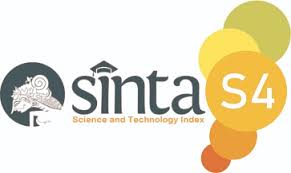PEMBUATAN YOGURT BERBASIS KACANG TUNGGAK (Vigna unguiculata) DENGAN METODE FREEZE DRYING (KAJIAN JENIS DAN KONSENTRASI BAHAN PENGISI) [IN PRESS JULI 2015]
Abstract
Kacang tunggak (Vigna unguiculata L.) merupakan bahan pangan lokal tinggi protein. rendah lemak, potensinya kurang. Pembuatan yogurt bubuk berbasis kacang tunggak mejadi pilihan produk yogurt untuk vegetarian membutuhkan protein dan menghindari kolesterol. Penelitian ini bertujuan mengetahui konsentrasi penambahan bahan pengisi terbaik agar didapat yogurt berkualitas. Hasil penelitian menunjukkan perlakuan terbaik berdasarkan fisik, kimia, mikrobiologi dan organoleptik diperoleh pada perlakuan dekstrin 15% dan maltodesktrin 15%. Perlakuan dekstrin 15% menghasilkan bubuk rendemen 26.13%, kadar air 2.36%, kecerahan 93. Karakteristik rekonstitusi kecepatan rehidrasi 0.34g/s, pH 3.93, total asam 1.21%, viskositas 100cp, kecerahan 61, kadar protein 3.78%, BAL 2.19x108 cfu/ml. Skor warna 4.85, aroma 4.1, rasa 4.25 dan kekentalan 4.3. Perlakuan maltodekstrin 15% menghasilkan bubuk rendemen 27.46%, kadar air 3.25%, kecerahan 93.1. Karakteristik rekonstitusi kecepatan rehidrasi 0.48g/s, pH 4.02, total asam 0.99%, viskositas 143cp, kecerahan 61.3, kadar protein 3.80% dan total BAL 2.30x108 cfu/ml. Skor warna 5.25, aroma 4.65, rasa 4.75 dan kekentalan 4.45.
Â
Kata Kunci : Dekstrin, Kacang Tunggak, Maltodekstrin, Yogurt





















